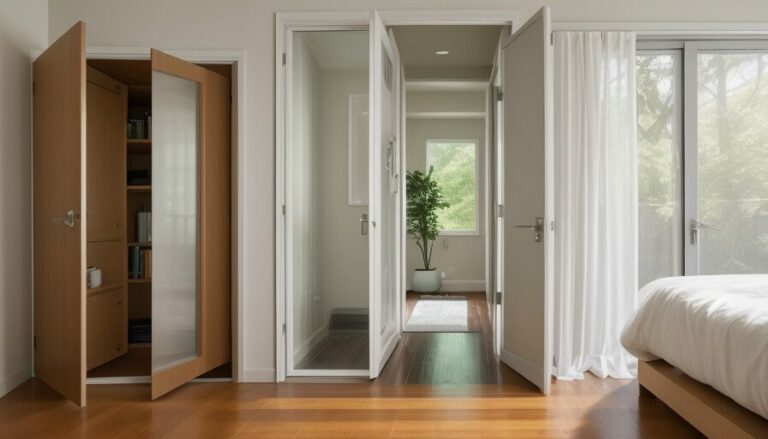In the hustle and bustle of modern life, finding moments of peace and tranquility is essential for our well-being.
Home, ideally, should be our sanctuary—a place where we can unwind, relax, and feel safe. However, achieving a sense of privacy at home can sometimes be challenging, especially in today’s interconnected world.
Whether you live in a bustling city or a quiet suburb, creating privacy within your living space is crucial. Here, we’ll explore some practical tips and tricks to help you enhance privacy at home, turning it into a peaceful sanctuary tailored to your needs.
1. Window Treatments
Windows are the eyes of your home, offering views of the outside world but also inviting prying eyes in. Investing in quality window treatments such as blinds, curtains, or shades can provide an effective barrier against unwanted attention. Opt for materials that offer both privacy and light control, allowing you to adjust them according to your needs throughout the day.
2. Landscaping
Strategically landscaping your outdoor space can significantly enhance privacy levels. By strategically placing trees, shrubs, or tall bushes around your property, you can naturally create barriers that shield your home from the prying eyes of passersby or neighbors.
Opt for dense, evergreen plants to ensure privacy throughout the year, and think about integrating elements like trellises or fences to augment seclusion. Additionally, in places like Palm Beach, Florida, motorized screens for patios can be an excellent addition to your privacy arsenal, offering customizable protection from both the elements and unwanted attention.
3. Privacy Screens
Indoor privacy screens are versatile solutions for creating separate zones within open floor plans or dividing shared spaces. Whether you need to carve out a private workspace in a studio apartment or add a cozy nook to your living room, screens offer flexibility while maintaining a sense of openness.
4. Smart Home Technology
Embrace the benefits of smart home technology to enhance privacy and security. Install smart locks, motion-sensing lights, and security cameras to monitor and control access to your home. Additionally, smart window treatments can be programmed to open and close automatically, providing privacy when needed while maximizing natural light.
5. Soundproofing
Privacy isn’t just about visual separation—it’s also about minimizing unwanted noise intrusion. Soundproofing your home can significantly improve comfort and tranquility, especially in urban environments or shared living spaces. Consider adding heavy curtains, rugs, or acoustic panels to absorb sound and create a quieter environment.
6. Personalized Retreats
Designate specific areas of your home as personal retreats where you can escape and unwind. Whether it’s a cozy reading corner, a meditation space, or a spa-like bathroom, having dedicated areas for relaxation promotes a sense of privacy and peace.
7. Declutter and Organize
A cluttered space can feel chaotic and overwhelming, detracting from your sense of privacy and serenity. Take the time to declutter and organize your home, creating a tidy and harmonious environment that promotes relaxation. Invest in storage solutions to keep belongings out of sight and maintain a sense of spaciousness.
8. Customize Lighting
Lighting plays a crucial role in setting the mood and atmosphere of your home. Experiment with different lighting options, such as dimmer switches, lamps, or candles, to create intimate and cozy spaces. Soft, warm lighting can help foster a sense of privacy and comfort, especially during the evening hours.
9. Create a Barrier with Furniture
Strategically arranging furniture can help delineate and define different areas within your home, creating a sense of privacy and separation. Position sofas, bookcases, or screens to create barriers between public and private spaces, allowing you to maintain personal boundaries while still enjoying an open floor plan.
10. Establish Boundaries
Lastly, communication is key to maintaining privacy within shared living spaces. Establish clear boundaries with roommates, family members, or houseguests to ensure mutual respect for each other’s privacy. Encourage open dialogue and establish guidelines for privacy-related issues such as noise levels, personal space, and access to common areas.
In Conclusion
Privacy at home is essential for creating a peaceful sanctuary where you can relax, recharge, and feel secure. By implementing these tips and tricks, you can customize your living space to suit your privacy needs while maintaining a sense of openness and connection with the outside world. Remember that achieving privacy is an ongoing process that requires attention and effort, but the rewards—a tranquil and harmonious home—are well worth it.



